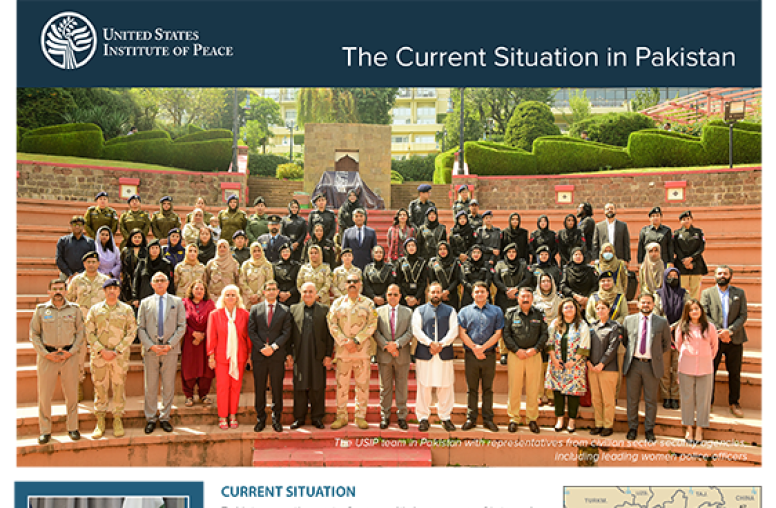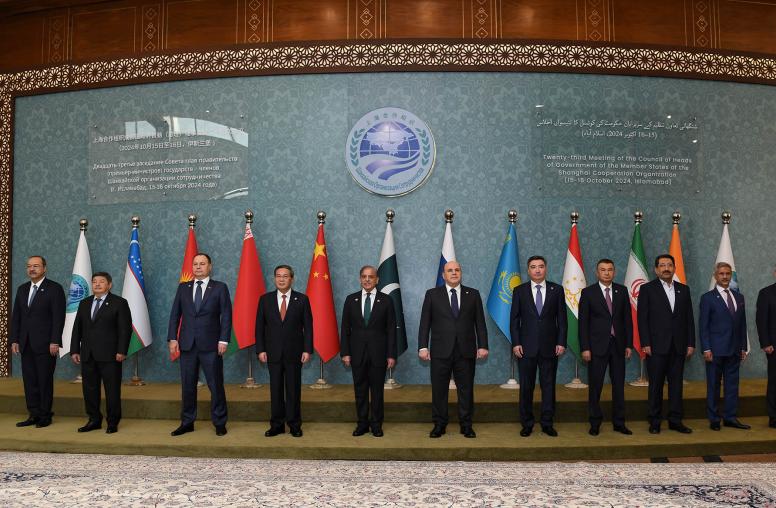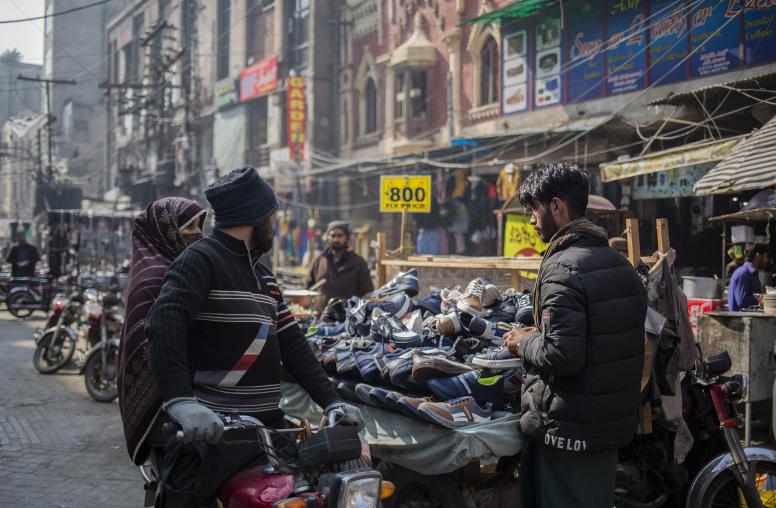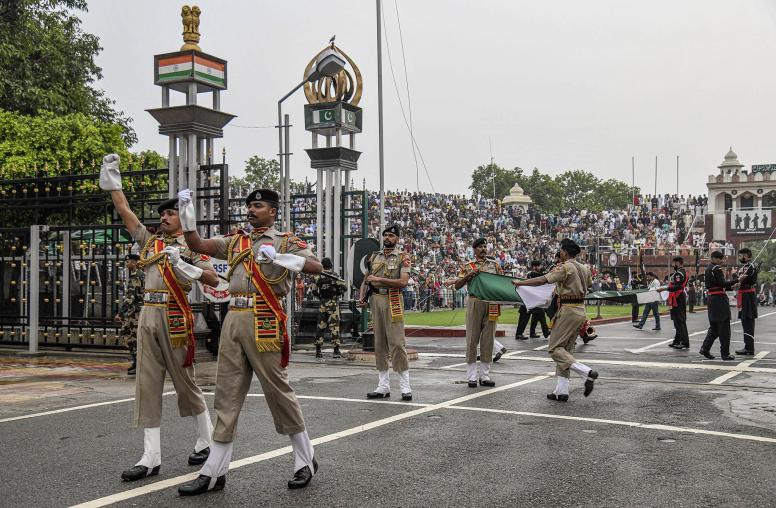Ten Years After the Mayhem in Mumbai, is South Asia any Safer?
After scuttling a promising peace process, the attacks have driven India and Pakistan even farther apart
In November 2008, 10 members of Lashkar-e-Taiba—a Pakistan-based terrorist organization—carried out a series of 12 coordinated attacks in Mumbai, killing 164 and wounding over 300. In the aftermath, simmering tensions between India and Pakistan led many to worry about the possibility of war in South Asia. India-Pakistan relations have remained rocky in the 10 years since the attacks. USIP’s Moeed Yusuf—whose latest book, Brokering Peace in Nuclear Environments: U.S. Crisis Management in South Asia, examines the Mumbai crisis in close detail—discusses the impact of the attacks on the India-Pakistan relationship, crisis management in South Asia and the future of terrorism in the region.

What impact did the Mumbai attacks have on the India-Pakistan relationship?
I think it was a watershed moment. It ruptured the single most promising peace process the two sides had ever managed. They had been trying to resolve their problems in earnest since 2003. Far from being able to get things back on track, the relationship has remained extremely tense ever since. The Mumbai attacks are also responsible for cementing Pakistan’s image as a perpetual enemy in the minds of young Indians who otherwise did not carry the baggage of history. This mindset—further reinforced by the lingering memories of Mumbai and the fact that it is still not a settled issue given that legal cases against some of the accused are still pending in Pakistani courts—isn’t going to change for the foreseeable future.
To be frank, Mumbai has been disastrous for the relationship. India lost, Pakistan lost, and therefore over a billion South Asians lost. The only winners are the terrorists who perpetrated the attack.
Why are the cases against the attackers still lingering in Pakistan’s courts?
The answer to this depends on which side of the Indo-Pakistani border you live. Pakistan’s explanations are legal. India and Pakistan have virtually no cooperation in terms of sharing information and fulfilling the legal formalities required for the other to prove guilt in respective courts of law. Even though teams from both sides have conducted investigations and sought to cooperate, mutual mistrust and deliberate and inadvertent bureaucratic hurdles have continued to hold them back. Ultimately, both allege ill-intent on the other’s part.
India says the masterminds of the attacks are proxies of the Pakistani state and thus Pakistan is deliberately stalling the process to protect them. Pakistan accuses India of not sharing requisite information about the crime scene and related testimonies to embarrass and malign Pakistan diplomatically.
Are India and Pakistan better prepared to deal with terrorism jointly and/or separately?
There are no bilateral efforts to present a united front against terrorism. In fact, the two sides may be worse off than they were a decade ago: There have been no serious terrorism-related confidence building measures concluded between the two since the Mumbai attacks. Even previously active mechanisms are now dormant.
Individually though, they may be doing better. India has invested significantly in bolstering its domestic counterterrorism capability after the damning indictment of its law enforcement and intelligence preparedness at the time of the Mumbai attacks. The United States has been a crucial partner and has helped India significantly in improving its capacities. While periodic incidents of terrorism within India suggest that these improvements have not made the country immune to all terrorism, its defenses should be able to prevent mega-attacks like we saw in 2008 in Mumbai.
Pakistan experienced mayhem in terms of domestic terrorism between 2007-2012, but the state has pulled back lost ground from terrorists targeting Pakistanis. Pakistani authorities regularly tout the sharp decline in domestic terrorism as a major success. The problem is that Pakistan has prioritized counterterrorism actions against groups like the Pakistani Taliban that look inward but continues to face allegations that it is allowing a free hand, if not actively supporting, groups that are oriented toward Afghanistan and India. Pakistan claims its failure to eliminate all terrorism is a capacity issue; the world accuses Pakistan of lacking the will to go after these externally focused groups. Pakistan, for its part, has increasingly been alleging that anti-Pakistan terrorism is emanating from Afghan soil.
To my mind, we are never going to be able to resolve this problem fully unless India, Pakistan, and Afghanistan agree to join hands to undermine terrorism and address the underlying causes. Sadly, the mistrust between India and Pakistan and Afghanistan and Pakistan is too deep for this to happen.
Is crisis management in South Asia tougher or easier than a decade ago?
Tougher; no question about it.
Indian and Pakistani posturing dictates this. Since Mumbai, India has acknowledged the presence of its (previously denied) limited war doctrine, popularly dubbed “Cold Start.” It seeks to use military force below Pakistan’s (assumed) nuclear threshold. Notably, one of the attractions of the doctrine for Indian planners is that it can be employed swiftly enough to forestall the possibility of international pressure to hold India back from using force. In the past, decisive U.S. mediation achieved exactly that; its ability to do so was key in preventing escalation. Pakistan, for its part, has developed a tactical nuclear weapon capability. Paradoxically, this further lowers the threshold at which Pakistan could employ nuclear weapons.
None of this is encouraging and could easily lead the two sides into a fast-paced crisis that is difficult to mediate for third parties like the U.S., but where the stakes are far higher because of a potentially lowered nuclear threshold. Mind you, there is one thing that hasn’t changed in 10 years: India and Pakistan had no direct crisis management and escalation control protocols in place in 2008 and they have none now.
What is the future of terrorism in South Asia?
I worry about what may be coming down the pike. The problem is that while both sides have improved their tactical counterterrorism capabilities, they are simultaneously experience growing intolerance and polarization in their societies. Extreme right wing forces have repeatedly proven their ability to force compromises from the Pakistani state on religious matters. Their clout and reach within society are increasing even if they are not actively perpetrating terrorism.
In India, communalism and Hindu nationalism seem to be rising at an alarming rate. Intolerance of this nature breeds societal discord and victimization, and in turn, to disenfranchised segments with increased sympathy for anti-state elements. While research is divided on the link with violence, there is certainly correlation between these processes and increased vulnerability to extremist recruitment. Both states have to pull back these negative societal trends if they are to remain terror free over the long run.



